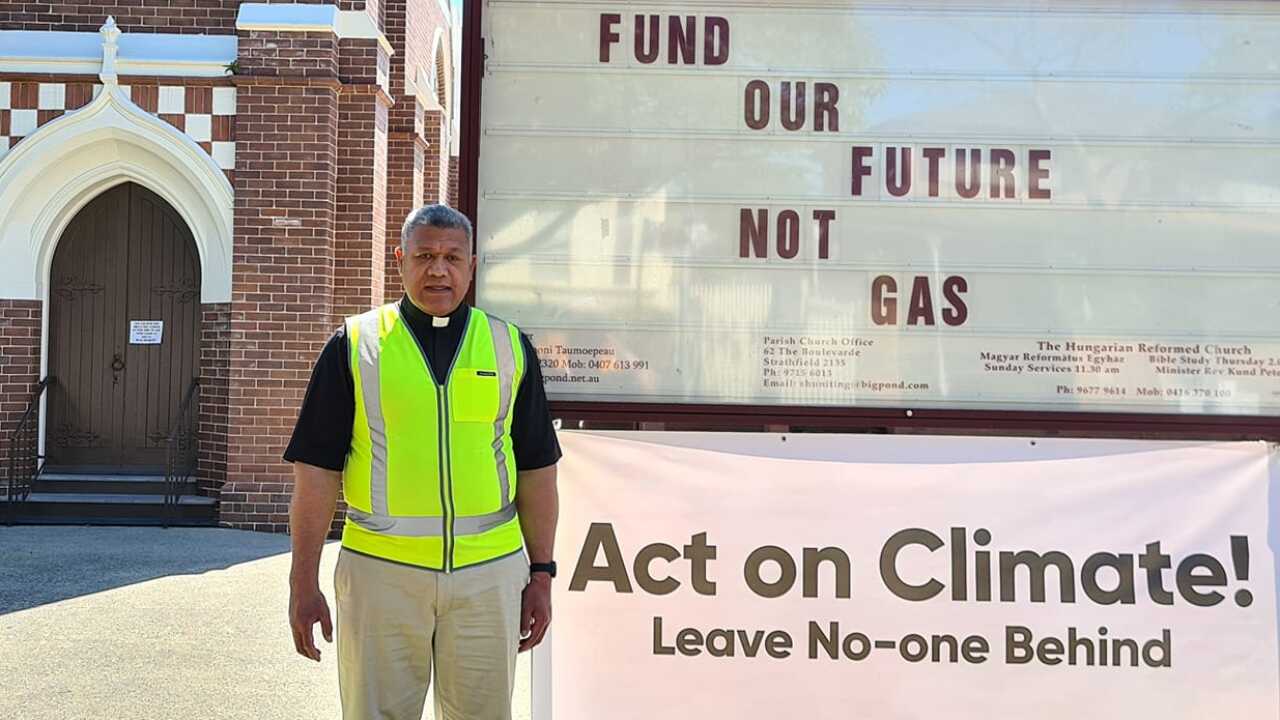US President Joe Biden on Thursday ramped up ambitions on slashing greenhouse gas emissions, putting the country back at the forefront with a summit he hopes brings the world closer to limiting the worst climate change.
In a virtual Earth Day summit, Mr Biden will announce that the US will cut emissions by 50 to 52 per cent by 2030 compared with 2005 levels, officials said.
Australia currently has a 2030 target reducing 2005 level emissions by 26 to 28 per cent.
Mr Biden, in a massive diplomatic undertaking for a three-month-old administration, is welcoming 40 leaders for two days of meetings, including Australian Prime Minister Scott Morrison, the presidents of adversaries China and Russia and Pope Francis.
The new US target aims to "challenge the world on increasing ambition and combatting the climate crisis", an administration official, who spoke under customary condition of anonymity, told reporters.
Combined with announcements expected by other leaders, the official said the world will be closer - but not yet on track - to keeping the planet's temperature within 1.5 degrees Celsius above pre-industrial times, the level scientists say is needed to avoid the most severe effects of climate change.
"Over half the world's economy is now moving to cut emissions at a global pace needed to keep 1.5 C in reach," the official said. "Our coalition is growing."
The prime ministers of Japan and Canada, which have forged early bonds with Mr Biden, are expected to unveil their own new climate plans at the summit.
The European Union this week confirmed its own ambitious goals and former bloc member Britain on the eve of Mr Biden's summit released the most far-reaching targets of any major economy with 78 per cent cuts by 2035 from 1990 levels.
Britain in November will host a UN conference in Glasgow that aims to upgrade the 2015 Paris Agreement.
Under the Paris Agreement, former US president Barack Obama said the United States would cut emissions by 26 to 28 per cent by 2025 - a goal that Mr Biden, his former vice president, has now dramatically scaled up.
Mr Biden's action raises the pressure on China - by far the world's largest carbon emitter.
China's relationship with the United States has sharply deteriorated in recent years but Beijing nonetheless agreed to cooperate on climate during a pre-summit visit by John Kerry, the former US secretary of state who is now Mr Biden's globe-trotting climate envoy.
President Xi Jinping promised last year that China would go carbon neutral by 2060 but environmentalists note that it has gone slow on reducing coal - which is the dirtiest form of energy but carries political sensitivities due to mining jobs.
Comparisons between major economies are difficult as the United States takes 2005 as its baseline while the Europeans use 1990, the date set in the landmark Kyoto Protocol.
Mr Obama's successor Donald Trump pulled out of Paris, calling it unfair to coal miners and the energy industry. But the United States is still largely on track to meet Mr Obama's goals thanks to commitments by states, especially California, and a sharp drop in industrial production during the COVID-19 pandemic.
Australia's climate action 'insufficient'
Meanwhile, the Biden administration has warned and it must adopt a more ambitious response.
Australia's approach to cutting greenhouse gas emissions came under scrutiny during a briefing call ahead of Mr Biden’s summit, with a senior Biden official saying there must be a shift in Australia's mindset if it wants to achieve net zero emissions by 2050.
"At the moment, I think our colleagues in Australia recognise that there's going to have to be a shift," the official, speaking on condition of anonymity, said during a briefing call.
“It’s insufficient to follow the existing trajectory and hope that they will be on a course to deep decarbonisation and getting to net zero emissions by mid-century.”
Mr Morrison has not formally committed to the net-zero emissions target, instead saying Australia wants to achieve the goal as soon as possible, relying on technological advancements.
"The trajectory to any net zero outcome is not linear. Anyone who thinks it is I know doesn't get it," he told reporters in Canberra on Thursday afternoon.
"The way technology works is there is a long lead time into its development and commercialisation and once the technology is in place, you can see a massive transformation."
Additional reporting by Tom Stayner.












